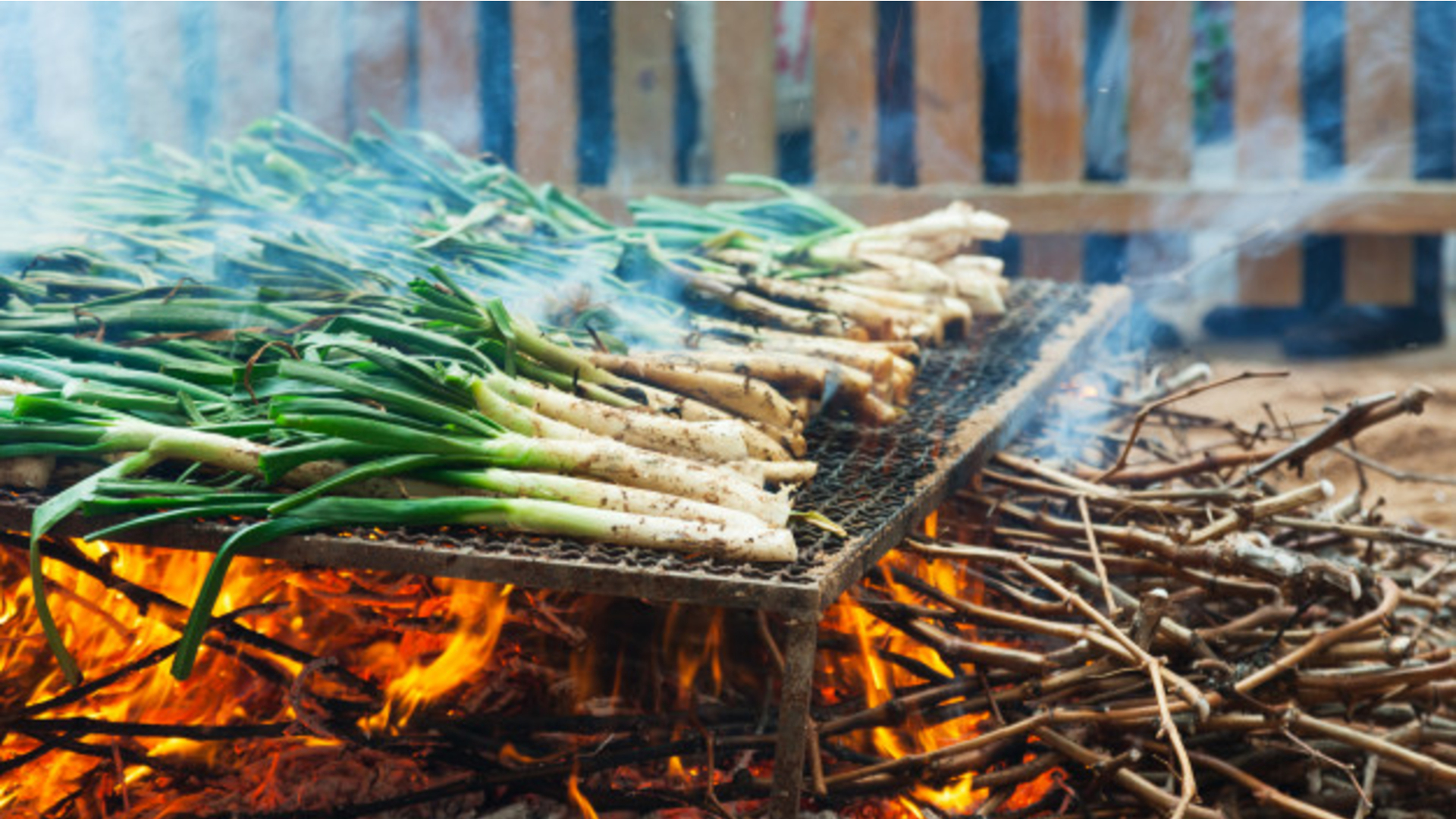One of the best parts about living abroad is learning about a whole new calendar of cultural traditions and festivals that take place in your new region. In Catalonia and Spain in general, there is no shortage of long-standing traditions that have developed over centuries. Have you heard of a calçotada yet?
For anyone who loves barbecue, onions, or both, going to a calçotada is an absolute must-have experience!
 “Calçots”
“Calçots”By Marc Pasqual
So What Is a Calçotada, Anyway?
During the winter months (say between January and April), the region of Catalonia harvests a local onion named the “calçot,” which is native to the small town of Valls in Tarragona, although it is grown in just about any agricultural or forested area of Catalonia. I couldn’t seem to find an exact translation, but you can think of it as a giant scallion that is slightly smaller than a leek.
The tradition is to grill hundreds of these calçots at a barbecue, or calçotada, either at home with friends if you have the luxury of a big terrace or garden, or to eat out at a restaurant with a group of friends for the experience. There is even an annual festival hosted by their place of origin every year to commemorate this tradition.
After grilling massive amounts of calçots, they are wrapped in tinfoil and left to sit and cool down for about 30-40 minutes before they are ready to be served. Meanwhile, a combination of meats will be grilled, such as chistorra, butifarra, morcilla, and a variety of other Catalan or Spanish delicacies. Some grilled veggies, such as artichoke or eggplant, may also make their way to your plate. However, this part of the world is certainly not known for its vegetarian cuisine.
Once the calçots and barbecued meats are ready to be enjoyed, it is best to prepare yourself with a bib because things are about to get messy!
 Grilled treats
Grilled treatsBy Marc Pasqual
Before you eat these grilled treats, you must first remove the charred layer on the outside, then you can dip it into a delicious creamy sauce called Romesco, which is made of roasted red peppers, cashews, tomato, lemon, garlic, olive oil, and salt. These are some very typical Mediterranean ingredients, and this sauce does not disappoint. But removing this charred layer of skin is bound to get all over your hands and anywhere else that’s not protected, hence the bib which is very necessary (unless, of course, you were smart and showed up wearing all black).
 quot;Romesco Sauce”
quot;Romesco Sauce”By Marjorie Jean Vera
And the best part about this messy feast is that all of this goodness is meant to be washed down with any local wines, such as the Priorat or Garnatxa full-bodied reds, or even a bit of Cava, which is a lightly sparkling white wine. My favorite is the dark red Blau Priorat wine, which comes in a bottle with a gorgeous blue holographic label with a cross or stained-glass label.
So, if you’re lucky enough to be invited to one of these, definitely take advantage of this opportunity and experience a delightful winter culinary Catalan tradition that been enjoyed for hundreds of years!
What are some of the favorite traditions you have come across during life as an expat or traveler? Why not leave me your comment below?
by: Marjorie Vera


